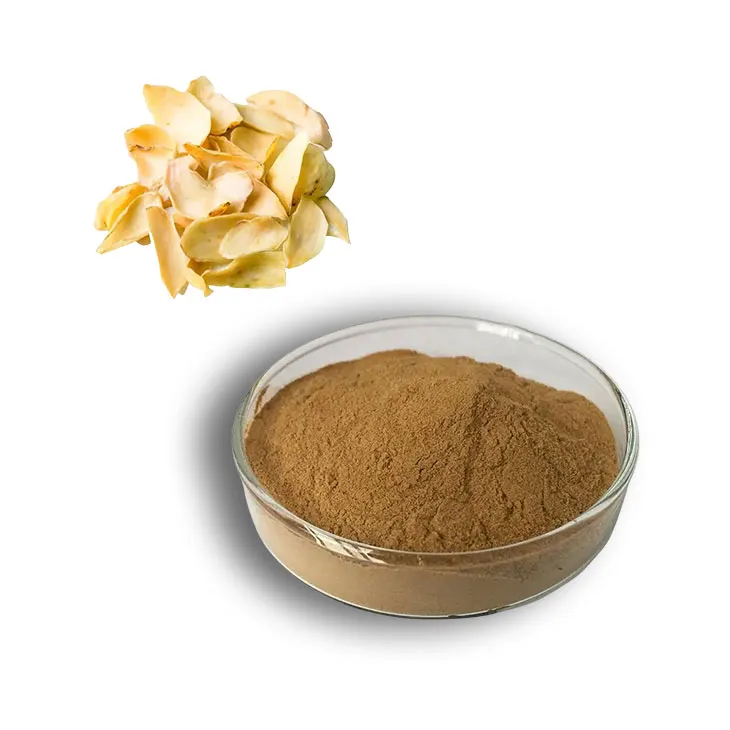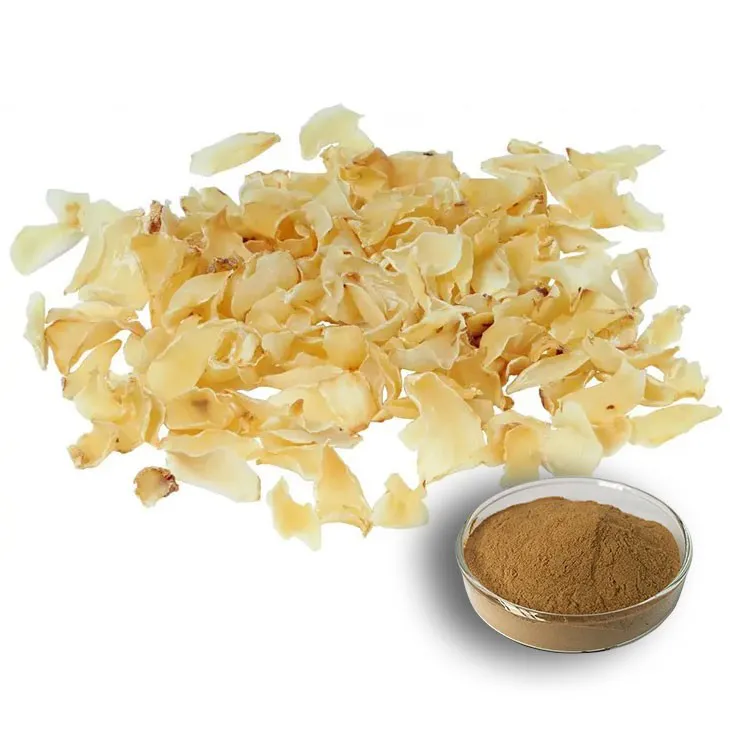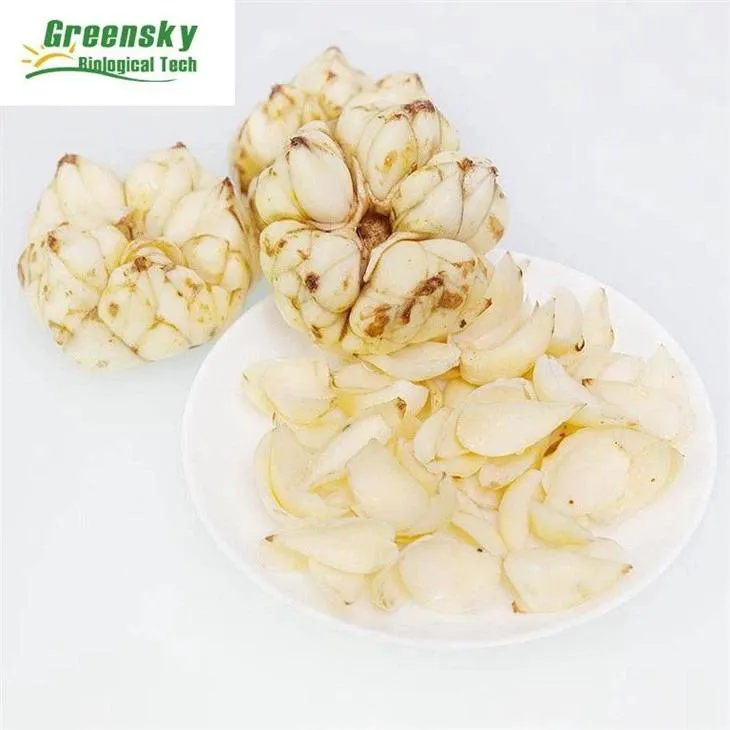- 0086-571-85302990
- sales@greenskybio.com
Best Types of Lily Extract: A Guide to Selecting the Best Lily Extract
2024-11-12

Introduction
Lily extracts have been gaining significant popularity in various industries, including cosmetics, pharmaceuticals, and food supplements. These extracts are derived from different species of lilies, each offering unique properties. Understanding the different types of Lily extracts, their origins, chemical compositions, and benefits is crucial for making an informed decision when choosing the best Lily extract for your specific needs.

Origins of Lily Extracts
1. Asiatic Lilies
Asiatic lilies are native to Asia. They are widely cultivated for their beautiful and vibrant flowers. The extract from Asiatic lilies is rich in various bioactive compounds. These lilies are often grown in temperate regions and are known for their hardiness.2. Oriental Lilies
Oriental lilies have their origin in the Orient, particularly in areas like Japan. They are highly fragrant and are often used in perfumery. The extract from Oriental lilies contains unique aromatic compounds that contribute to their distinct smell. They require more specific growing conditions compared to Asiatic lilies, such as well - drained soil and a certain amount of sunlight.3. Daylilies
Daylilies are native to Asia but are now widely distributed around the world. They are known for their large and showy flowers. The extract from daylilies has been studied for its potential health benefits. Daylilies are relatively easy to grow and can tolerate a wide range of environmental conditions.
Chemical Compositions of Lily Extracts
1. Flavonoids
Flavonoids are a major component of lily extracts. These compounds have antioxidant properties. For example, in Asiatic lily extracts, flavonoids such as Quercetin and kaempferol are present. They help in protecting the cells from oxidative stress by scavenging free radicals.2. Alkaloids
Some lily extracts contain alkaloids. In Oriental lily extracts, certain alkaloids are found which may have potential pharmacological effects. However, it is important to note that alkaloids can also be toxic in high concentrations, and proper extraction and purification processes are required to ensure safety.3. Glycosides
Glycosides are also present in lily extracts. These compounds can play a role in the plant's defense mechanisms. In daylily extracts, glycosides have been studied for their possible role in promoting health. They may interact with the body's systems in various ways, such as influencing digestion or the immune system.
Benefits of Lily Extracts
1. In Cosmetics
- Skin Hydration: Lily extracts are often used in skincare products for their ability to hydrate the skin. The glycosides and flavonoids in the extract can help to retain moisture in the skin, leaving it looking plump and healthy. - Anti - Aging: The antioxidant properties of the flavonoids in lily extracts can combat the signs of aging. Free radicals in the environment can damage the skin cells, leading to wrinkles and fine lines. By scavenging these free radicals, lily extracts can help to keep the skin looking youthful. - Skin Soothing: Lily extracts have a calming effect on the skin. They can be used to soothe irritated skin, whether it is due to environmental factors or skin conditions such as eczema.2. In Pharmaceuticals
- Anti - Inflammatory: Some lily extracts, especially those rich in flavonoids, have shown anti - inflammatory properties. This can be beneficial in treating various inflammatory conditions in the body, such as arthritis. - Antimicrobial: The chemical components in lily extracts may also have antimicrobial effects. This means they can help in fighting against bacteria, fungi, and viruses. For example, in some traditional medicine systems, lily extracts have been used to treat infections. - Cardiovascular Health: There is evidence to suggest that certain lily extracts may have a positive impact on cardiovascular health. The antioxidant and anti - inflammatory properties may help in reducing the risk of heart diseases, such as by improving blood vessel function.3. In Food Supplements
- Nutritional Support: Lily extracts can provide additional nutrients when added to food supplements. For example, they may contain vitamins and minerals that are beneficial for overall health. - Digestive Health: The glycosides in lily extracts may aid in digestion. They can help in breaking down food and promoting the absorption of nutrients in the digestive tract. - Immune System Boost: The bioactive compounds in lily extracts can also support the immune system. By enhancing the body's natural defenses, they can help in preventing diseases.
Factors to Consider When Selecting Lily Extract
1. Purity
It is essential to ensure the purity of the lily extract. High - quality extracts should be free from contaminants such as pesticides, heavy metals, and other impurities. Look for products that have been tested for purity and meet relevant quality standards.2. Extraction Method
- Solvent - Based Extraction: This is a common method. However, the choice of solvent can affect the quality of the extract. For example, using organic solvents may leave residues that could be harmful. It is important to choose extracts that use safe and high - quality solvents. - Supercritical Fluid Extraction: This is a more advanced method that uses supercritical fluids, such as carbon dioxide. It can produce a purer extract with a higher concentration of bioactive compounds. But it is also more expensive.3. Intended Use
- If you are using the lily extract for cosmetic purposes, you may focus on its skin - related benefits such as hydration and anti - aging. Look for extracts that are formulated for skincare applications. - For pharmaceutical use, the purity and pharmacological properties are crucial. Ensure that the extract has been tested for its intended medicinal effects. - When using it as a food supplement, consider factors such as taste, safety, and compatibility with other ingredients.4. Source and Sustainability
- Know the source of the lilies used for extraction. Lilies that are sustainably sourced are not only better for the environment but may also have a higher quality due to proper cultivation practices. - Support suppliers who follow sustainable harvesting methods to ensure the long - term availability of lily extracts.Conclusion
In conclusion, lily extracts offer a wide range of benefits in different industries. By understanding their origins, chemical compositions, and benefits, as well as considering factors such as purity, extraction method, intended use, and source, you can make an informed decision when choosing the best lily extract for your specific requirements. Whether it is for enhancing your skin's health, treating a medical condition, or supplementing your diet, the right lily extract can be a valuable addition.
FAQ:
What are the different origins of lily extract?
Lily extract can be sourced from various lily species. For example, the white lily (Lilium candidum) is a common origin. Some lily extracts also come from Asiatic lilies (Lilium asiaticum). Different origins may result in slightly different chemical compositions and properties due to variations in growing conditions, soil types, and genetic factors.
What are the main chemical components in lily extract?
Lily extract typically contains flavonoids, which are known for their antioxidant properties. It may also have alkaloids, polysaccharides, and various essential oils. Flavonoids can help protect cells from oxidative damage, while alkaloids may have certain physiological effects on the body. The polysaccharides might contribute to skin hydration and other beneficial functions.
What are the benefits of lily extract for skin?
Lily extract is often beneficial for the skin. It can help with skin hydration, making the skin look more supple and moisturized. The antioxidant properties of its components can combat free radicals, which are associated with skin aging. It may also have anti - inflammatory effects, reducing skin redness and irritation.
How can one determine the quality of lily extract?
The quality of lily extract can be determined in several ways. Firstly, the source of the lily is important. Lilies grown in clean, unpolluted environments are likely to yield higher - quality extracts. Secondly, the extraction method matters. High - quality extracts are often obtained through advanced extraction techniques that preserve the active components. Thirdly, look for certificates or quality assurances from reliable manufacturers or third - party testing agencies.
Can lily extract be used in food products?
Yes, in some cases, lily extract can be used in food products. However, it must comply with relevant food safety regulations. Some lily species are edible, and their extracts can be used to add flavor or certain functional properties to food. For example, it may be used in some confectionery items or beverages for its unique flavor and potential health - promoting properties.
Related literature
- The Chemical Constituents and Bioactivities of Lily Extracts"
- "Lily Extract: From Botanical Source to Therapeutic Applications"
- "Evaluating the Quality and Efficacy of Lily Extract in Cosmetics"
- ▶ Hesperidin
- ▶ citrus bioflavonoids
- ▶ plant extract
- ▶ lycopene
- ▶ Diosmin
- ▶ Grape seed extract
- ▶ Sea buckthorn Juice Powder
- ▶ Beetroot powder
- ▶ Hops Extract
- ▶ Artichoke Extract
- ▶ Reishi mushroom extract
- ▶ Astaxanthin
- ▶ Green Tea Extract
- ▶ Curcumin Extract
- ▶ Horse Chestnut Extract
- ▶ Other Problems
- ▶ Boswellia Serrata Extract
- ▶ Resveratrol Extract
- ▶ Marigold Extract
- ▶ Grape Leaf Extract
- ▶ blog3
-
High purity olive leaf extract
2024-11-12
-
Lavender oil extraction method
2024-11-12
-
100% organic virgin sea buckthorn fruit oil
2024-11-12
-
Lotus leaf extract powder factory in China
2024-11-12
-
China aged garlic extract supplier
2024-11-12
-
Deer antler extract powder manufacturer
2024-11-12
-
Saw palmetto extract vs whole herb
2024-11-12
-
Quercetin
2024-11-12
-
Okra Extract
2024-11-12
-
Black Pepper Extract
2024-11-12
-
Yellow Pine Extract
2024-11-12
-
Peppermint Oil
2024-11-12
-
Troxerutin
2024-11-12
-
Lily extract
2024-11-12
-
Carrageenan Extract Powder
2024-11-12
-
Boswellia Serrata Extract
2024-11-12
-
Maca Extract
2024-11-12




















